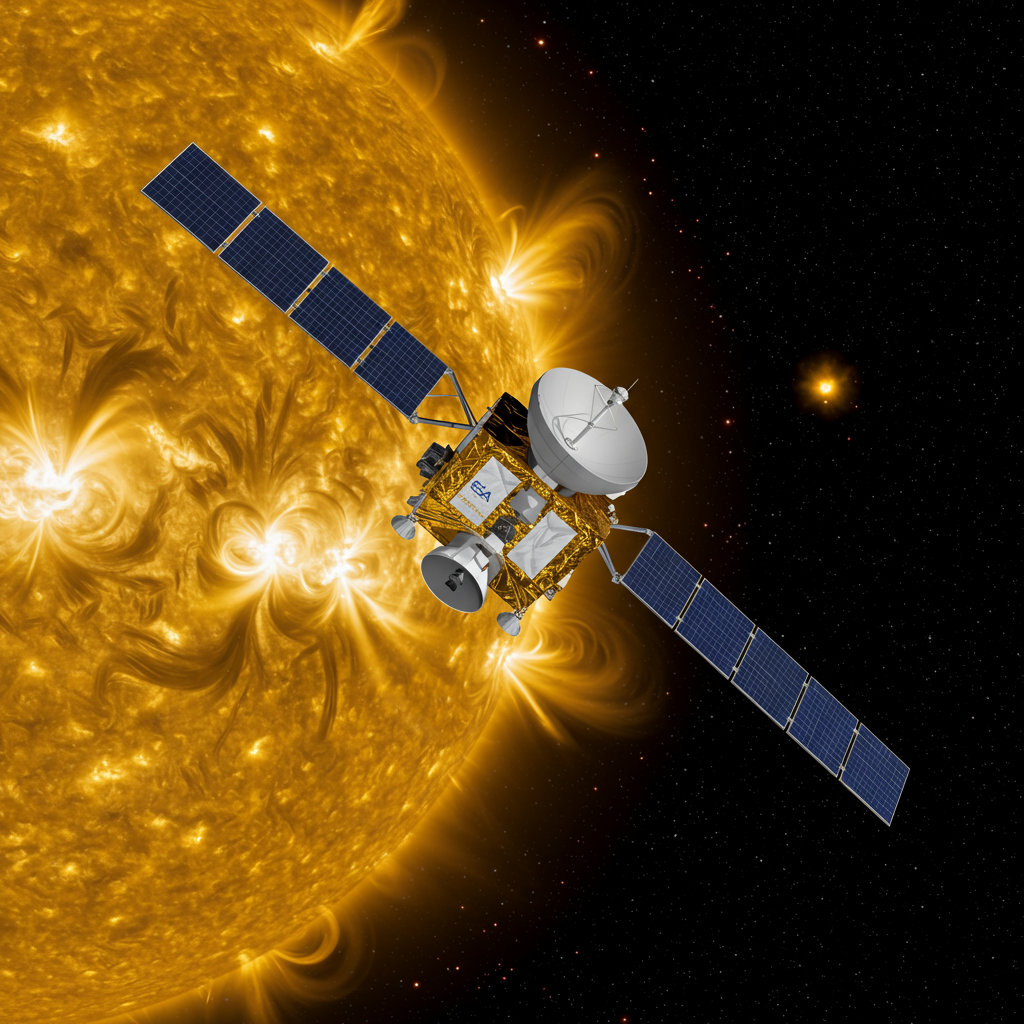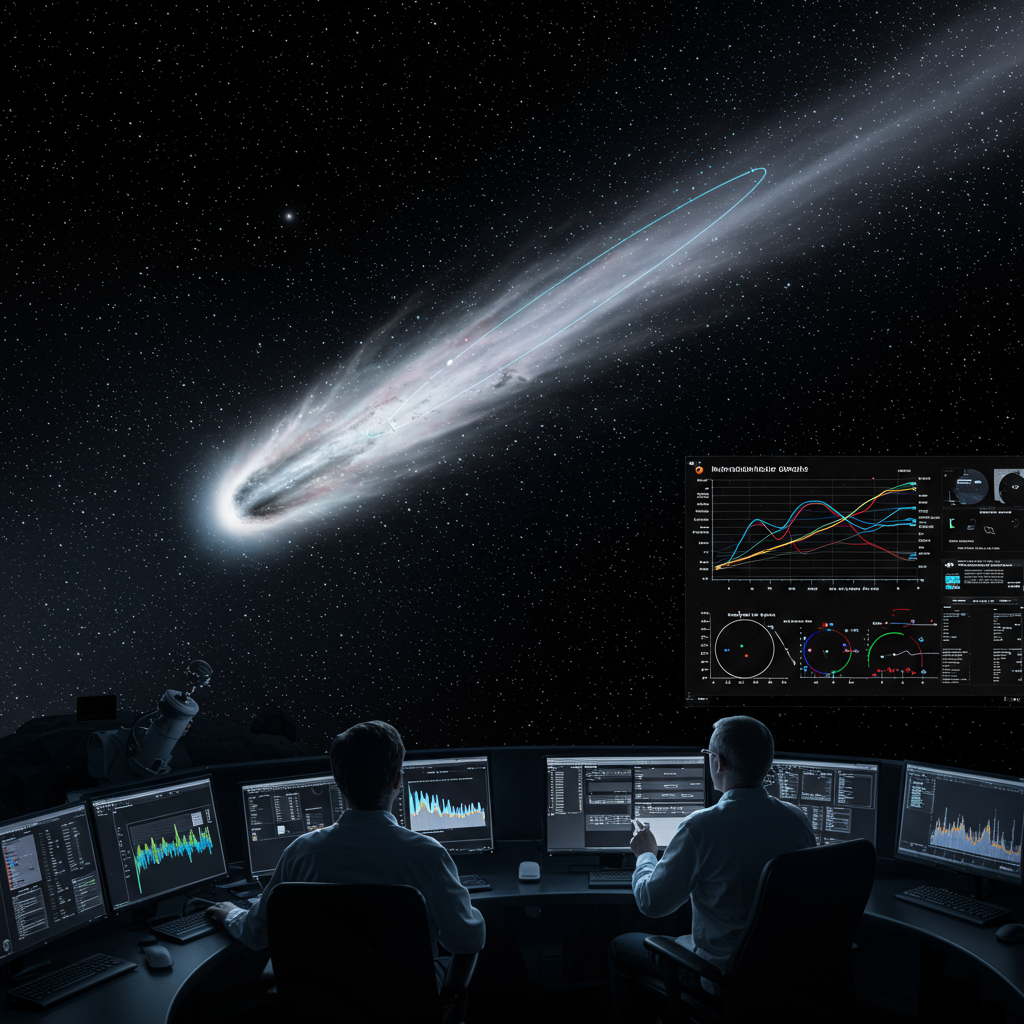Humanity is currently witnessing an unprecedented era of solar exploration, with multiple advanced missions delivering revolutionary views of our star. From the mysterious, never-before-seen south pole to intricate details on the solar surface and the explosive dynamics of space weather heading towards Earth, these new observations are providing critical data to solve long-standing solar mysteries and improve our ability to predict hazardous solar activity.
For decades, scientists have largely observed the Sun from the plane in which Earth and the other planets orbit, known as the ecliptic. This has meant that the Sun’s poles remained “literally terra incognita,” hidden from direct view by imaging instruments. Understanding the polar regions is paramount because they hold key clues to the Sun’s complex 11-year cycle of activity, which governs the frequency of sunspots, flares, and powerful eruptions called coronal mass ejections (CMEs). This cycle is fundamentally driven by the Sun’s magnetic field, which becomes increasingly tangled and chaotic as different parts of the fluid star rotate at different speeds, culminating in the magnetic poles flipping approximately every 11 years.
Peering at the Sun’s Poles for the First Time
A major breakthrough comes from the European Space Agency (ESA) and NASA’s Solar Orbiter mission, launched in 2020. By performing multiple gravity assist flybys of Venus, Solar Orbiter is gradually tilting its orbit out of the ecliptic plane, acting as a “‘stairway to heaven'” to reach unique perspectives. In early 2025, the spacecraft achieved an orbital inclination of 17 degrees relative to the ecliptic, providing the first direct views and data from the Sun’s turbulent south pole.
These initial observations are already proving invaluable, especially as the Sun is currently near the peak of its activity cycle, a period when the magnetic poles are preparing to flip. While a simple bar magnet has a clear, single polarity at each pole, data from Solar Orbiter’s Polarimetric and Helioseismic Imager (PHI) reveals the Sun’s south pole during this active phase is a “messy jumble” with mixed patches of both positive and negative magnetic polarity. This chaotic state is temporary; after the magnetic field successfully flips and the Sun moves towards its quieter minimum phase, a single dominant polarity is expected to consolidate at the poles. Scientists note that observing how this polarity buildup occurs is a crucial “missing piece of the puzzle” for understanding the solar cycle and predicting its future behavior. High-latitude flows carrying magnetic elements to these polar regions essentially “sow the fundamental seeds for the next solar cycle.”
In addition to magnetic field mapping, Solar Orbiter’s Spectral Imaging of the Coronal Environment (SPICE) instrument is shedding light on the lower layers of the Sun’s atmosphere, particularly the transition region between the relatively cool photosphere and the incredibly hot corona. By measuring light emitted by ionized atoms like carbon, hydrogen, oxygen, neon, and magnesium at temperatures around 32,000°C, SPICE helps astronomers understand how the corona reaches millions of degrees Celsius when the surface is only thousands. Tracking the velocity and distribution of these ions provides crucial insights into how particles are ejected from the Sun to form the solar wind.
Solar Orbiter will continue to increase its orbital tilt in the coming years, reaching angles greater than 33 degrees by 2029. This trajectory promises even more revealing views of both poles throughout the remainder of the current solar cycle.
Tracking Explosive Space Weather
Closer to Earth, the Polarimeter to Unify the Corona and Heliosphere (PUNCH) mission, a constellation of four spacecraft in Earth orbit, is providing the widest-ever views of the Sun’s outer atmosphere, the corona, and the solar wind flowing out into space. PUNCH’s objective is to study the corona and solar wind as a single, connected system.
Though still in its commissioning phase, PUNCH has already captured unprecedented views of coronal mass ejections (CMEs) as they expand away from the Sun. In one remarkable instance, PUNCH tracked a CME heading directly towards Earth, observing it “literally washing across the entire sky of the inner solar system.” This powerful eruption, traveling at speeds up to 4 million miles per hour, was successfully tracked until less than two hours before it impacted Earth, causing widespread auroras. PUNCH’s unique wide-angle perspective, combined with high-resolution narrow-field views of CMEs near the Sun, significantly advances our ability to monitor and understand potentially disruptive space weather events.
Probing the Corona’s Mysteries
Another new instrument, the Coronal Diagnostic Experiment (CODEX), recently became operational on the International Space Station. CODEX is a next-generation solar coronagraph designed to study the faint corona by blocking out the bright Sun’s disk. Unlike previous instruments that primarily measured the density of the solar wind, CODEX is uniquely capable of also measuring its temperature and velocity directly within the corona.
These combined measurements of density, temperature, and velocity provide scientists with a deeper understanding of the fundamental “energetics” at play in the corona and how the solar wind forms and accelerates. Initial data from CODEX reveals that the solar wind doesn’t flow smoothly but rather in hot gusts. Understanding what causes this gustiness, potentially linked to magnetic reconnection (the snapping and rejoining of stressed magnetic field lines), is a key question CODEX aims to answer, moving us closer to solving the puzzle of why the corona is so incredibly hot.
Unlocking Surface Secrets with Unmatched Detail
Complementing these space-based missions, the Daniel K. Inouye Solar Telescope (DKIST) in Hawai’i is providing the sharpest views ever captured of the Sun’s visible surface from the ground. With the ability to resolve features as small as 20 kilometers (12 miles) across, DKIST is revealing the Sun’s dynamics with breathtaking clarity.
Recent observations from DKIST showcase the fine details of granulation, the bubbling pattern on the solar surface caused by convection. These new views reveal surprising bright and dark “stripes” lining the walls of the granulation cells. These subtle stripes, representing magnetic changes of only about 100 Gauss (comparable to a refrigerator magnet), are significant enough to alter the density and temperature of the solar gases, creating the observed patterns. These high-resolution observations from DKIST add another vital piece to the puzzle of how magnetic fields interact with the Sun’s dynamic surface plasma.
A New Era of Solar Science
Together, the insights from Solar Orbiter’s polar views, PUNCH’s space weather tracking, CODEX’s coronal diagnostics, and DKIST’s surface details mark the beginning of a new era in solar science. By combining these unprecedented perspectives, scientists are gaining a much fuller picture of how our nearest star works – from the nuclear furnace at its core to the vast expanse of the heliosphere influenced by its outflow. This deeper understanding is not only crucial for fundamental research but also imperative for improving predictions of space weather, which can disrupt modern technology and even pose risks to astronauts. The quest to fully understand and predict the Sun’s behavior, described as the “Holy Grail of solar physics,” is now advancing with powerful new tools providing views we could only dream of just a few years ago.




